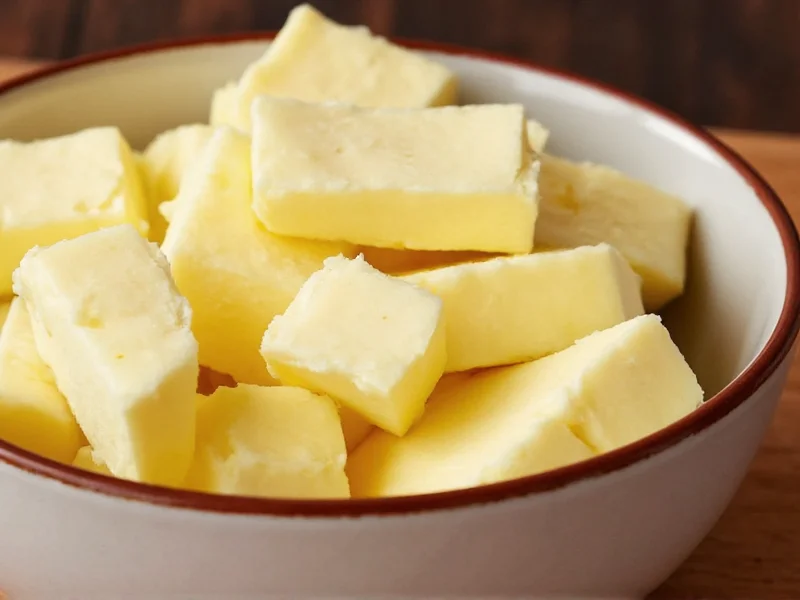Yes, you can substitute butter for vegetable oil in most recipes using a 3:4 ratio—meaning 3/4 cup of melted butter replaces 1/2 cup of vegetable oil. The substitution works best in baked goods like cakes and muffins, but requires adjustments for texture and moisture since butter contains water while oil is 100% fat.
Understanding Butter and Oil Properties
Before swapping ingredients, understand their fundamental differences. Butter contains about 80% fat and 15-20% water, plus milk solids that brown during cooking. Vegetable oil is pure fat with no water content. This distinction affects how they behave in recipes—oil creates more moist, tender baked goods while butter provides richer flavor and structure.
Butter to Oil Substitution Ratio Explained
When replacing vegetable oil with butter, use this precise conversion:
| Vegetable Oil | Melted Butter | Adjustment Tip |
|---|---|---|
| 1/4 cup | 3 Tbsp | Reduce other liquids by 1 Tbsp |
| 1/2 cup | 6 Tbsp (3/4 stick) | Reduce other liquids by 2 Tbsp |
| 3/4 cup | 1/2 cup + 2 Tbsp | Reduce other liquids by 3 Tbsp |
| 1 cup | 3/4 cup | Reduce other liquids by 1/4 cup |
How Substitution Affects Different Recipes
Understanding can you substitute butter for vegetable oil in baking requires considering recipe type. In cakes and muffins, butter creates a slightly denser crumb but adds flavor complexity. For brownies, substituting melted butter for oil yields a chewier texture with richer chocolate notes. When making cookies, however, butter produces more spread and crisp edges compared to oil's chewier result.
Best Practices for Successful Substitution
For optimal results when using butter instead of vegetable oil in cake recipes:
- Melt and slightly cool butter before adding to prevent cooking eggs
- Reduce other liquids by 25% to compensate for butter's water content
- Consider adding 1-2 Tbsp extra oil to maintain moisture in delicate cakes
- Whisk melted butter thoroughly to emulsify before incorporating
When Substitution Doesn't Work Well
Avoid substituting butter for oil in high-heat cooking methods like deep frying, where butter's milk solids burn at lower temperatures than oil's smoke point. Similarly, in recipes relying on creaming butter with sugar (like traditional cookies), replacing with oil creates fundamentally different texture. For substituting oil for butter in cookies, expect less spread and a cakier texture.
Alternative Substitutes Worth Considering
If you need alternatives beyond the basic butter to oil conversion ratio, consider these options:
- Applesauce: Replace half the fat with unsweetened applesauce for lower-calorie baking
- Yogurt: Use plain Greek yogurt in a 1:1 ratio for cakes and muffins
- Avocado: Pureed avocado works well in chocolate baked goods
- Cooking spray: For greasing pans when exact fat measurement isn't critical
Professional Baking Tips
Experienced bakers often combine fats for optimal results. Try using half butter and half oil in cake recipes—you'll get butter's flavor with oil's moisture retention. When making brownies, substituting 50% of the oil with melted butter creates the perfect balance of fudgy texture and rich flavor. Remember that vegetable oil instead of butter in cake produces a more uniform crumb but lacks butter's aromatic complexity.
Frequently Asked Questions
Can I use melted butter instead of oil in brownies?
Yes, use 3/4 cup melted butter for every 1/2 cup oil. This substitution creates chewier, richer brownies with more complex flavor. Cool the melted butter slightly before adding to prevent cooking the eggs, and consider reducing other liquids by 2 tablespoons for optimal texture.
What happens if I use butter instead of oil in a cake mix?
Using butter instead of oil in cake mix creates a denser, more flavorful cake with better structure. The butter's water content may require reducing other liquids by 25%. For best results, melt and cool the butter before adding, and consider using 75% of the oil amount called for in the recipe.
Does substituting butter for oil change baking time?
Yes, butter-based recipes often require 5-10% longer baking time than oil-based ones because butter contains water that needs to evaporate. Check for doneness 5 minutes before the recipe's suggested time, using a toothpick test. Butter's milk solids also promote more browning, so you may need to reduce oven temperature by 25°F.
Can I substitute oil for butter in cookie recipes?
Yes, but the texture will change significantly. Cookies made with oil spread more and have a chewier texture with less crisp edges. Use 3/4 cup oil for every 1 cup butter, but expect flatter, less structured cookies. For better results, chill the dough for 30 minutes before baking to control spread.
Why does my cake sink when I substitute butter for oil?
Cake sinking often occurs when substituting butter for oil because butter's water content creates excess steam during baking. To prevent this, reduce other liquids by 25%, ensure proper leavening (check expiration dates on baking powder), and avoid overmixing the batter. Using a combination of half butter and half oil often yields the most reliable results.











 浙公网安备
33010002000092号
浙公网安备
33010002000092号 浙B2-20120091-4
浙B2-20120091-4